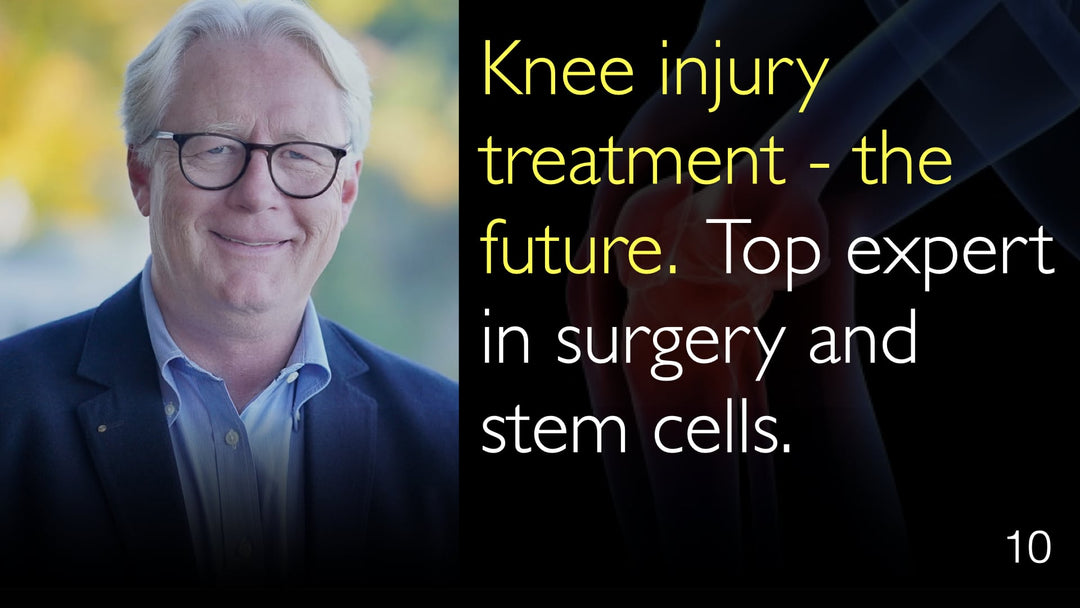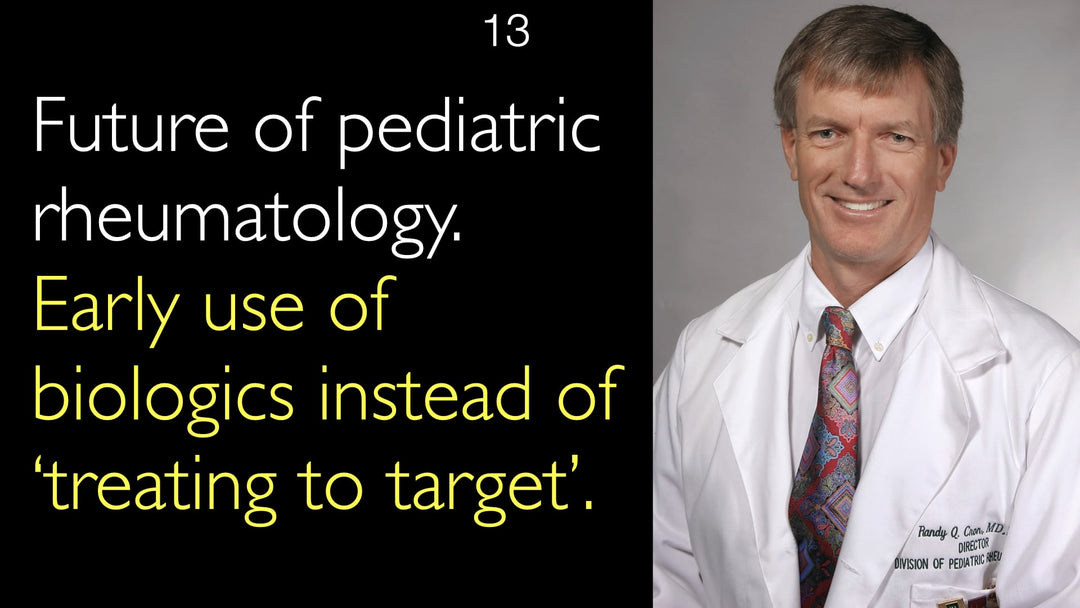Leading expert in knee surgery and cartilage repair, Dr. Matthias Steinwachs, MD, explains the future of knee injury treatment. He details strategies to avoid artificial joint replacement. Dr. Steinwachs focuses on controlling joint inflammation and restoring biomechanical balance. He discusses advanced techniques like 3D-printed tissue engineering and allograft cartilage transplantation. Stem cell therapy is explored as a signaling mechanism to enhance regeneration. The goal is to manage osteoarthritis and provide long-term joint function.
Advanced Knee Cartilage Repair and Osteoarthritis Treatment Options
Jump To Section
- Avoiding Artificial Joints in Knee Treatment
- Controlling Joint Inflammation for Success
- Future 3D-Printed and Tissue Engineering Approaches
- Allograft Cartilage Transplantation Benefits
- Stem Cell Therapy Role in Cartilage Repair
- Multimodal Treatment Strategy for Knee Injuries
- Full Transcript
Avoiding Artificial Joints in Knee Treatment
Dr. Matthias Steinwachs, MD, specializes in minimally invasive surgical treatment for knee injuries. His practice focuses on a crucial goal: helping patients avoid artificial joint replacement. He explains that many patients with arthritic joints and limited function can achieve success without an endoprosthesis. The key is understanding the fine balance between latent and active osteoarthritic processes in the knee. Dr. Matthias Steinwachs, MD, emphasizes that good biomechanical treatment can control this process. This approach allows patients to maintain good joint function and a high quality of life.
Controlling Joint Inflammation for Success
A central theme in the future of knee injury treatment is controlling inflammation. Dr. Matthias Steinwachs, MD, states that a joint must have low inflammation for any cartilage repair procedure to succeed. Uncontrolled inflammation from the osteoarthritic process actively hinders regeneration. The main focus of therapy is to bring the arthritic joint back into a state of balance. Dr. Matthias Steinwachs, MD, notes that controlling this inflammatory environment is a primary treatment objective. This foundational step is essential before advanced repair techniques can be effective.
Future 3D-Printed and Tissue Engineering Approaches
Emerging technologies will revolutionize how surgeons address large cartilage defects. Dr. Matthias Steinwachs, MD, highlights ongoing research into 3D-manufactured approaches. He specifically mentions the use of 3D printers in knee cartilage repair. These tissue engineering projects aim to restore huge areas of damaged cartilage. The concept involves transferring cartilage from other areas of the joint or creating new structures. This represents a significant leap forward from current methods for treating severe joint injury.
Allograft Cartilage Transplantation Benefits
Allograft cartilage transplantation is a powerful technique gaining wider use. Dr. Matthias Steinwachs, MD, explains its application in restoring joint surfaces completely damaged by osteoarthritic inflammation. A major benefit of using pieces of cartilage from an allograft is the lack of a waiting period for tissue growth. The healthy cartilage tissue is already in place and fully formed. The surgical challenge is primarily its re-fixation onto the patient's bone. This method allows surgeons to directly address extensive cartilage loss and rebuild a healthy cartilage structure.
Stem Cell Therapy Role in Cartilage Repair
Stem cell use is a rapidly evolving area in knee injury therapy. Dr. Matthias Steinwachs, MD, provides a critical clarification on their function. He states that stem cells are primarily signaling cells that transport information for regeneration. They themselves do not perform the bulk of the actual cartilage tissue regeneration. Their role is to enhance the joint's innate regeneration potential. Dr. Steinwachs also notes there are strict limitations for their application. They are not a standalone solution but a component of a broader treatment strategy.
Multimodal Treatment Strategy for Knee Injuries
The future of knee osteoarthritis therapy lies in a combined, multimodal approach. According to Dr. Steinwachs, no single technique can cover every problem. Instead, a combination of various treatment techniques allows surgeons to push the boundaries of what is possible. This includes addressing more severe stages of the osteoarthritic process. The interview with Dr. Anton Titov, MD, reveals that the goal is comprehensive control of the joint injury situation. This strategy ultimately provides patients with sustained pain relief and excellent life quality without needing a joint replacement.
Full Transcript
Dr. Anton Titov, MD: You extensively researched cartilage repair throughout your surgical career. You specialize in the minimally invasive surgical treatment of knee injuries, especially in sports and in professional athletes. How do you see the future of knee injury treatment and knee osteoarthritis therapy? What will be possible in knee cartilage repair in the future?
Dr. Matthias Steinwachs, MD: Yes. I think this is a big topic – how to avoid using artificial joints.
I use in my practice no artificial joints, so no endoprosthesis. I deal with arthritic joints with the limitation of function. I understand and I realize that there is a fine balance in osteoarthritic joints between a latent and active osteoarthritic process.
There are many different things to consider. If you could control the inflammation in the joint with good biomechanical treatment, then many patients have success and good function in a joint. These patients can do without an artificial joint.
I see in my patients that they are trying to avoid artificial joints for their problems. So the main problem, the main focus of treatment, is to control the osteoarthritic process and to bring the joint back into balance.
In the future, we will see more use of stem cells. We have two focal points of joint injury therapy. One is how you can restore a big area of damaged cartilage in the joint. The second point is how you can control the inflammation and the arthritic process in the joint.
Because to restore cartilage, there needs to be low inflammation in the joint. Otherwise, you will not have success with joint injury treatment.
In the osteoarthritic joints treatment field, we will see more 3D-manufactured approaches with the use of 3D printers. There are some research projects which are starting to restore huge areas of damaged cartilage by using a tissue engineering approach to transfer cartilage from other joint areas.
The other field parallel to cartilage repair is the allograft cartilage transplantation techniques. They are used more often now. Cartilage allograft treatments allowed many different benefits.
I also use pieces of cartilage from allograft in the situations where I have to restore a joint cartilage area which is completely damaged by osteoarthritic inflammation. Allograft pieces of cartilage allowed us to restore a joint surface from complete damage to a healthy cartilage structure.
In allograft cartilage transplantation, you do not have to wait for the cartilage tissue to grow. The cartilage tissue is already in place. You only have to address its re-fixation on the bone.
The other point is the different treatments that use stem cells. But we have to recognize that stem cells are signaling cells that are transporting information for cartilage regeneration. Stem cells themselves only transport the information.
Although stem cells don’t do the big job of actual regeneration of cartilage tissue. In the majority of cases, stem cells are used to enhance the regeneration potential in the joints. But there are strict limitations for the use of stem cells.
There is no single joint trauma or injury treatment technique that will cover the problem. But various treatment techniques allow us to go more to the margins, to the edge of the severity of the osteoarthritic process in the patient.
So we can control the joint injury situation and allow a good life quality for that patient.







